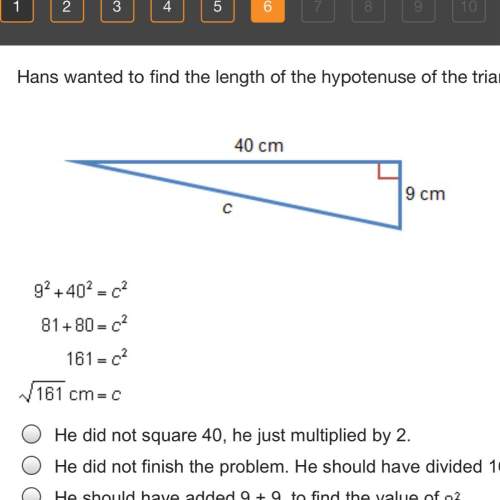
Mathematics, 27.08.2021 18:40 tassion3
The first five triangular numbers are shown, where n represents the number of dots in the base of the figure,
and d(n) represents the total number of dots in the figure.
When n = 1, there is 1 dot. When n = 2, there are 3 dots. When n = 3, there are 6 dots. Notice that the total
number of dots d(n) increases by n each time.
Use induction to prove that
d (n) = n(n+1)/2
Prove the statement is true for n = 1.


Answers: 1


Another question on Mathematics


Mathematics, 21.06.2019 19:00
Lucy is a dress maker. she sews \dfrac47 7 4 of a dress in \dfrac34 4 3 hour. lucy sews at a constant rate. at this rate, how many dresses does lucy sew in one hour? include fractions of dresses if applicable
Answers: 3

Mathematics, 21.06.2019 19:10
How many different three-digit numbers can be formed using the digits 1 comma 2 comma 9 comma 6 comma 4 comma 3 comma and 8 without repetition? for example, 664 is not allowed.
Answers: 1

Mathematics, 21.06.2019 20:30
choose the correct definition for extremo. a. end b. extra c. extract d. eventual
Answers: 2
You know the right answer?
The first five triangular numbers are shown, where n represents the number of dots in the base of th...
Questions




Advanced Placement (AP), 16.07.2019 17:30

Medicine, 16.07.2019 17:30

Biology, 16.07.2019 17:30






Mathematics, 16.07.2019 17:30


Biology, 16.07.2019 17:30


Business, 16.07.2019 17:30

Mathematics, 16.07.2019 17:30



Mathematics, 16.07.2019 17:30




